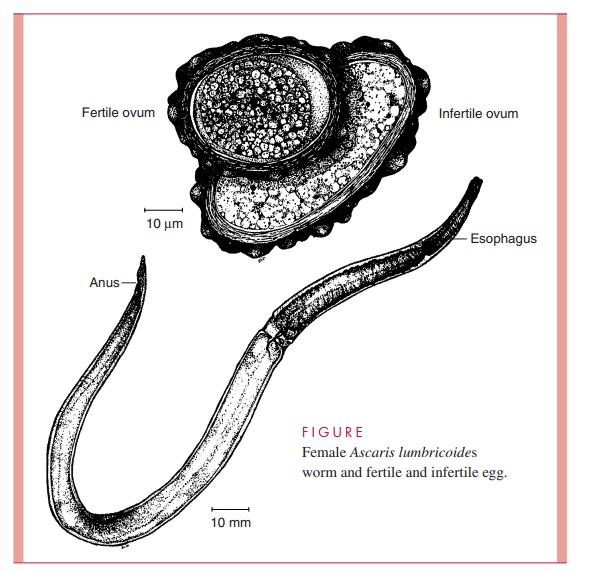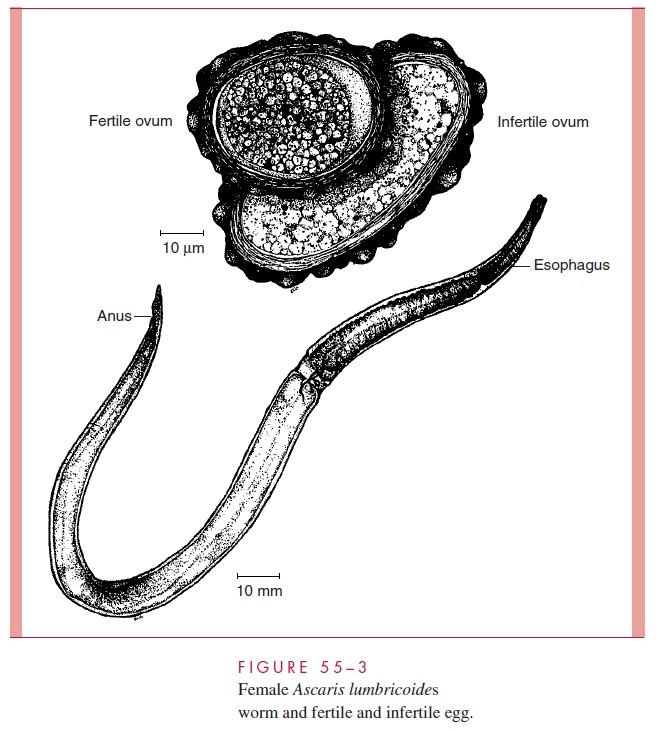Chapter: Medical Microbiology: An Introduction to Infectious Diseases: Intestinal Nematodes
Ascaris lumbricoides : Parasitology

Ascaris
Ascaris lumbricoides : PARASITOLOGY
A. lumbricoides, a short-lived worm (6 to 18 months), is the largest and most common ofthe intestinal helminths. Measuring 15 to 40 cm in length, it dwarfs its fellow gut round-worms and brings an unexpected richness to our mental image of a parasite. Its firm, creamy cuticle and more pointed extremities differentiate it from the common earthworm, which it otherwise resembles in both size and external morphology. The male is slightly smaller than the female and possesses a curved tail with copulatory spicules. The female passes 200,000 eggs daily, whether or not she is fertilized. Eggs are elliptic in shape; measure 35 by 55 μm; and have a rough, mamillated, albuminous coat over their chiti-nous shells. They are highly resistant to environmental conditions and may remain viable for up to 6 years in mild climates (Fig 55 – 3).

LIFE CYCLE
The adult ascarids live high in the small intestine, where they actively maintain them-selves by dint of muscular activity. The eggs are deposited into the intestinal lumen and passed in the feces. Like those of Trichuris, the eggs must embryonate in soil, usually for a minimum of 3 weeks, before becoming infectious. The similarity toTrichuris ends, however, with the ingestion of the eggs by the host. After hatching, the larvae penetrate the intestinal mucosa and invade the portal venules. They are carried to the liver, where they are still small enough to squeeze through that organ’s capillaries and exit in the he-patic vein. They are then carried to the right side of the heart and subsequently pumped out to the lung. In the course of this migration, the larvae increase in size. By the time they reach the pulmonary capillaries, they are too large to pass through to the left side of the heart. Finding their route blocked, they rupture into the alveolar spaces, are coughed up, and subsequently swallowed. After regaining access to the upper intestine, they com-plete their maturation and mate.
Related Topics